The biodiversity of Costa Rica
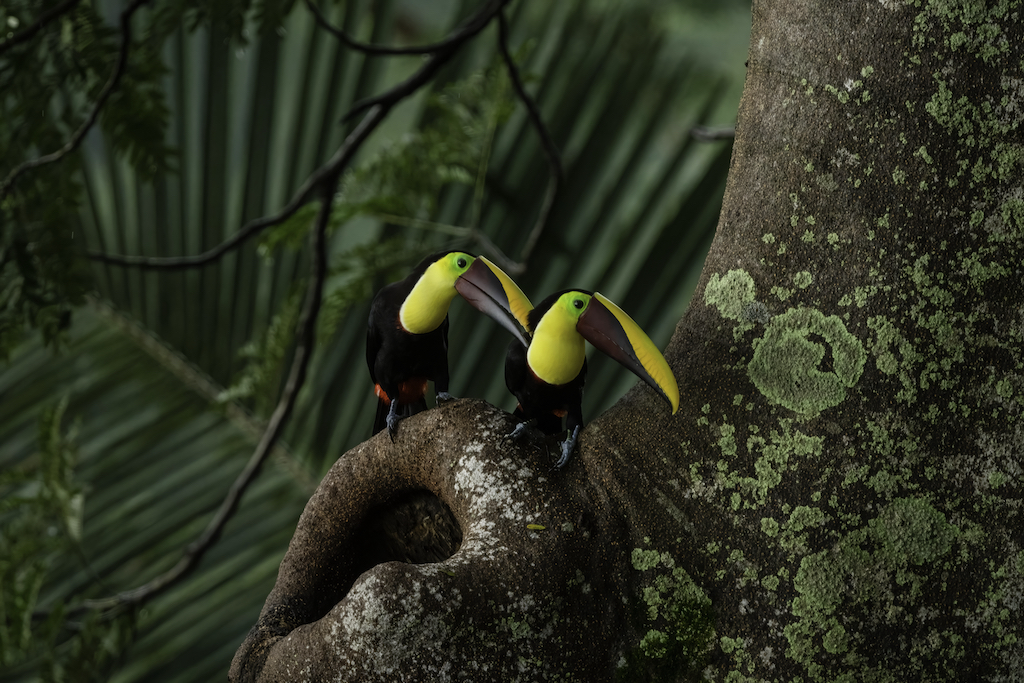
Costa Rica’s territory is merely 0.03% of the earth’s surface, but it is considered to be a country with more biodiversity than many other areas in the world. This country is home to about 4% of the species on Earth. The extreme biodiversity is partially explained by the geography of the country: located between two big continental masses and two oceans and with several mountain ranges. Also, the conservation policies developed during the 1970s have contributed to this invaluable treasure.
Whether one loves animals such as birds, amphibians, reptiles, mammals, or sea life or plants such as orchids, or trees this section gives you a nice overview of what animal and plant categories can be expected in this amazing country. Due to the fact that a large percentage of the total Costa Rican landmass is protected in one form or the other, any nature lover can explore and experience the amazing wildlife and terrain.
This small country has the greatest biodiversity of fauna in the world. From Mammals, Lizards and Amphibians, Insects, and Reptiles to the richest marine life in its Caribbean and Pacific Oceans and many streams, rivers, and lakes. Costa Rica is one of the best places on earth to explore and experience wildlife in its most concentrated form in terms of biodiversity within a relatively tiny space.
Birds
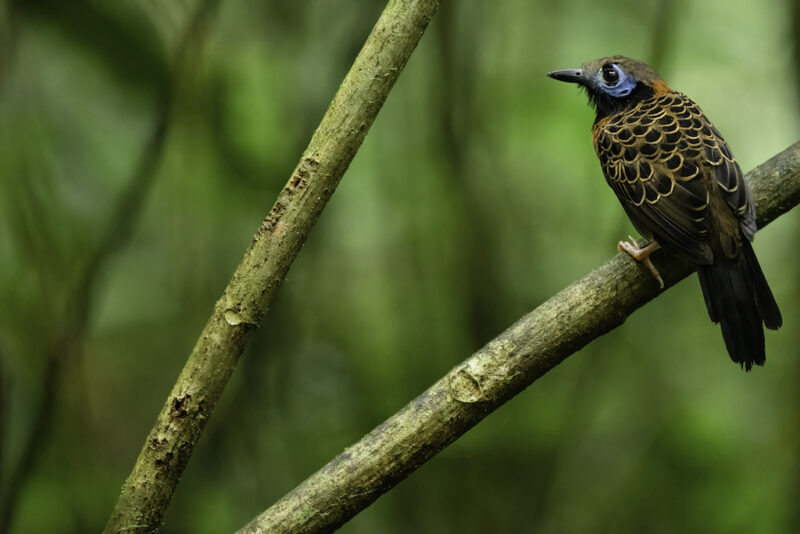
Costa Rica has a great biodiversity of birds (more than 850 species), which are relatively well-studied. Approximately 600 species remain in Costa Rica permanently while the remaining 150 are transitory and stop off in Costa Rica during mass migrations. Most of the migratory birds have their breeding areas in North America. Resident birds have local migrations within the territory, in response to seasonal changes that affect the abundance of food (nectar, fruits, insects).
Macaws and parrots fly up and down mountains searching for fruiting trees; the resplendent quetzal and the three-wattle bell-birds fly to lowlands after breeding. Ducks, ibises, herons, storks, and other aquatic birds depart from the wetlands as the dry season advances. Even more impressive is the arrival of migratory birds. Warblers, vireos, thrushes, tanagers, flycatchers, and orioles, to name a few, arrive in Costa Rica from the temperate and boreal North America during August, and become more abundant during September-October.
Hummingbirds
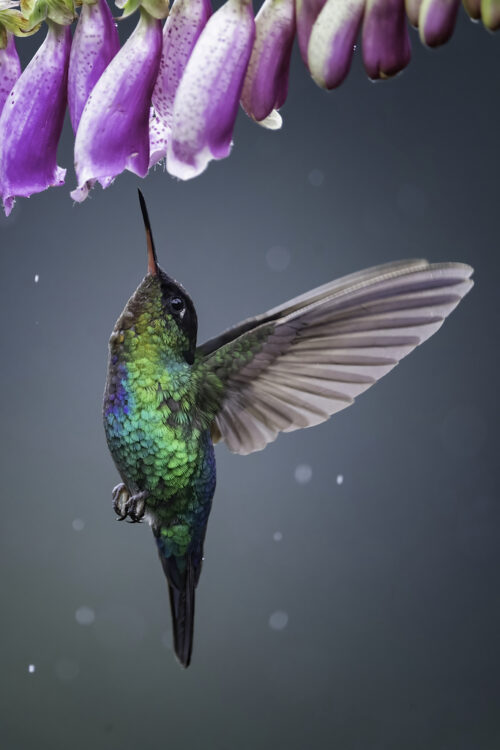
Costa Rica has around 50 species of hummingbirds. These birds are most often seen feeding on flowers, but they also eat insects. The volcano hummingbird (Selasphorus flammulla) is the smallest one (weighing only 2 grams) and occurs in the highlands. The largest hummingbird, the violet Sabrewing (Campylopterus hemileucurus) is about 15 cm, and easy to watch in the Caribbean lowlands. Two good places to watch several hummingbirds are Monteverde and Cerro de la Muerte.
Raptors
The raptors are both powerful and beautiful birds. They are easy to see flying or perching in the open canopy, where they have good visibility to look for prey. If you are traveling away from the city, pay close attention to the electricity cables and trees close to the road, and you’ll probably see at least one raptor. These diurnal birds of prey include hawks, kites, eagles (Fam. Accipitridae); falcons and caracaras (Fam. Falconidae); the osprey (near the water); the Caracara (Caracara plancus); the laughing falcon (Herpetotheres cachinnans); the peregrine falcon (Falco peregrinus) that sometimes can be seen at the parks in the city preying on doves; the roadside hawk (Buteo magnirostris) and the broad-winged hawk (Buteo platypterus). Raptor migration is a “must-see”. Columns of hundreds of birds in the sky are an amazing scene.
Quetzal and trogons
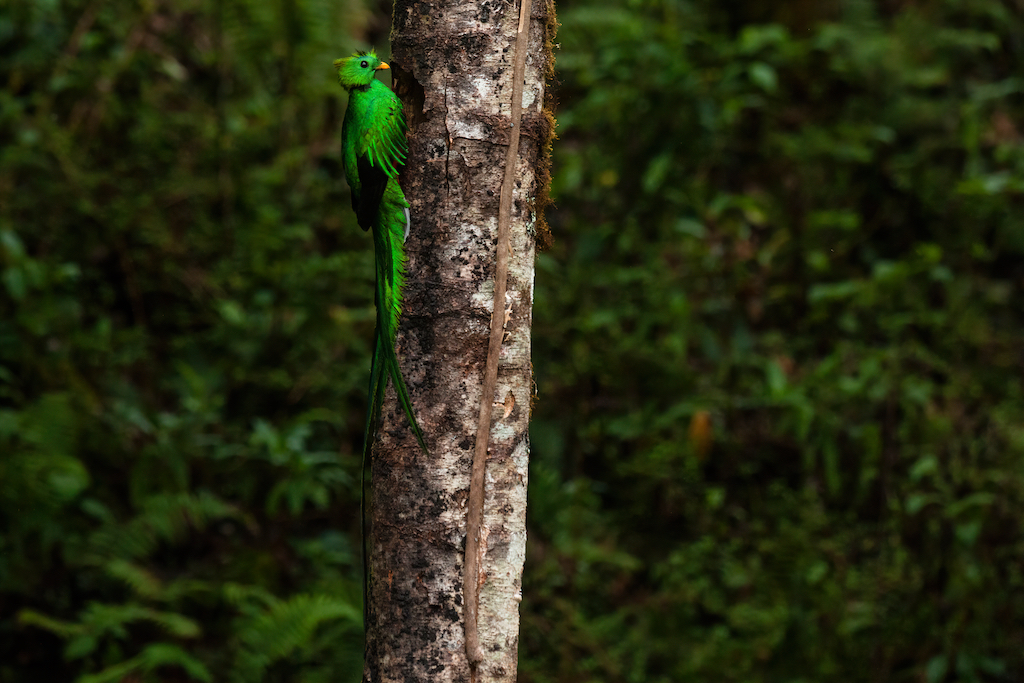
Trogons are colorful birds easy to watch in the lowlands; the quetzal is common in the highlands. The breeding season of the quetzals is from March to June in the highlands, and it makes them easy to watch because the males sing to attract females. After the mating season, these birds migrate to the lowlands following the fruiting patterns of the “aguacatillo” trees.
Endemic species
Mangrove Hummingbird (Amazilia boucardi)
Alfaro’s Hummingbird (apparently extinct) (Amazilia alfaroana)
Coppery-headed Emerald (Elvira cupreiceps)
Black-cheeked Ant-Tanager (Habia atrimaxillaris)
Coco island endemics
Cocos Cuckoo (Coccyzus ferrugineus)
Cocos Flycatcher (Nesotriccus ridgwayi)
Cocos Finch (Pinaroloxias inornata)
There are more endemic species restricted to Costa Rica and the western Panamá region: 10% of Costa Rica’s avifauna is restricted to very limited ranges within the southern half of the Central American isthmus, which is an exceptionally high rate of endemism.
Mammals
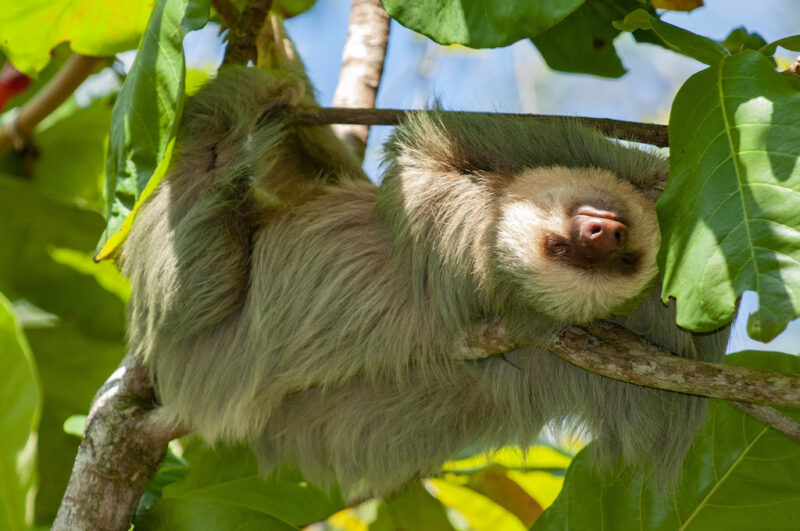
Costa Rica has about 240 species of mammals (about 6% of the world’s mammals). Interestingly, most of them are bats (109 species). Mammals are not as easy to watch as birds or reptiles, because most of them are nocturnal, cryptic, and easily detect the presence of people. Therefore, they are always hiding or running away. Nonetheless, there is a good chance to see coatis, deer, sloths, opossums, monkeys, agoutis, raccoons, peccaries, and bats.
The best place to see mammals is the dry forest, generally during the dry season, because the canopy and understory are less dense when the leaves fall which allows the animals to be more visible. Also, during the dry season, the mammals concentrate around the few water holes. Some marine mammals (whales and dolphins) are also easily seen on the coast during certain seasons.
Endemic Species
Shrew (Cryptotis jacksoni)
Spiny pocket mouse (Heteromys oresterus)
Deer mouse (Reithrodontomys rodriguezi).
Four-pocket gophers (Orthogeomys spp.)
the woolly olingo (Bassaricyon lasius).
Reptiles and Amphibians
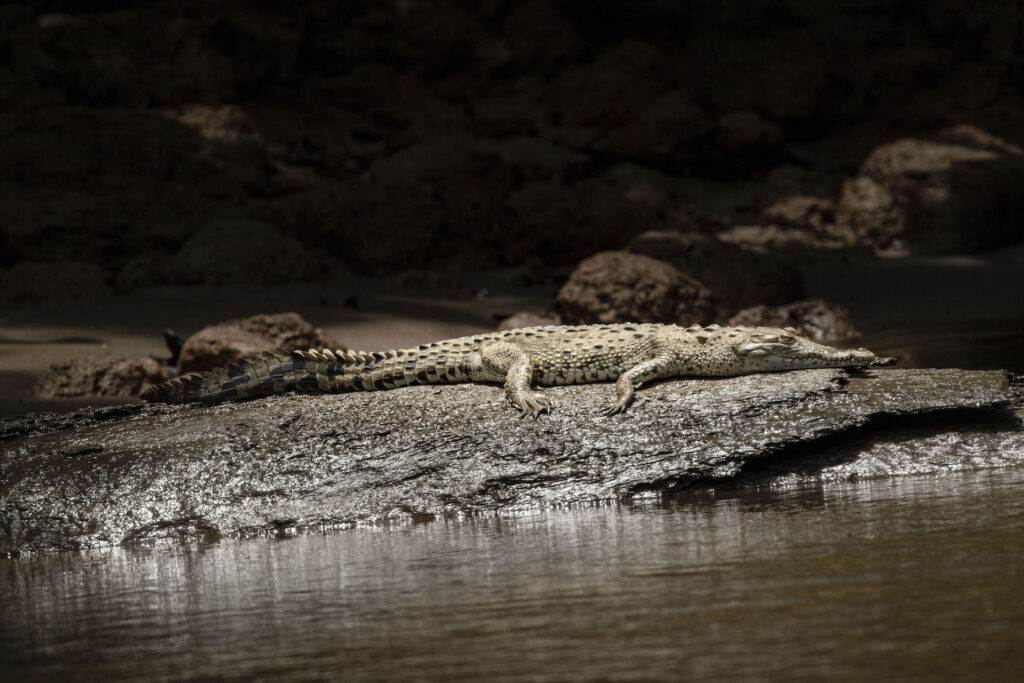
Reptiles and amphibians are the most colorful and mysterious herpetofauna of Costa Rica. They range in size from huge sea turtles to fingernail-size frogs. The herpetofauna also evokes a mixture of feelings in the people. Some folks are charmed by the colors of the arboreal frogs, while others are terrified by the presence of even an inoffensive snake. Costa Rica has a great biodiversity of reptiles including 14 species of turtles, about 70 species of lizards, more than 200 species of snakes, and 2 species of crocodile. Amphibians are also very diverse with about 130 species of frog, 37 of salamander, and 4 of caecilian. The Costa Rican herpetofauna (reptiles and amphibians) is relatively well-known, but even nowadays new species are discovered, especially in the Talamanca Range. Below, some of these famous animals are described in more detail.
Endemic Species consist of 44 species of amphibians and 17 of reptiles. Even in their own classifications, there is great biodiversity among all of the different creatures.
Costa Rican Frogs
Because the other Costa Rican amphibians are quite rare or difficult to see in the field, here only the frogs are explained in more detail. The frogs include also the toads; this is an artificial classification but in general, toads have their skin drier and with more warts than the frogs. The largest toad is the cane toad or marine toad (Rhinella marina)) which is very common in the forest and especially in urban environments. They release venom when threatened. Often, inexperienced and curious animals can be poisoned by these toads. Then, the largest frog is the Smokey Jungle Frog (Rana ternero, Leptodactylus pentadactylus), a relatively common and really huge frog (about 18 cm in length). Among the most attractive species of frogs are the red-eyed frog (Rana calzonuda – Agalychnis callidryas) the colored frog used in many T-shirts and souvenirs. Less well known by visitors than the red-eyed frog (but not less beautiful) are the glass frogs. These are small frogs living in the leaves of the trees with almost transparent skin beautiful pale green patterns and amazing eyes. Other famous frogs are the poison-dart frogs, easily seen by most people because they are diurnal, and the males defend their territory by singing constantly and loudly. Some of them are blue or green and red or completely red (Blue-jeans frog – Oophaga pumilio or Strawberry Frog -Oophaga granuliferus) and others are black and green (green poison-dart frog – Dendrobates auratus)
Insects and other Arthropods
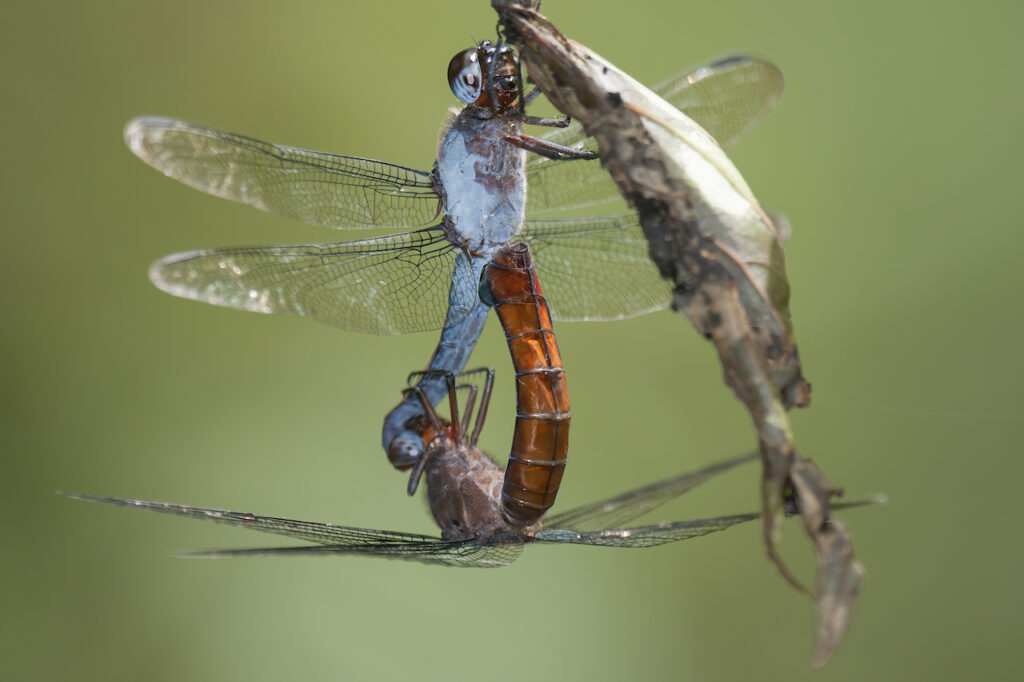
Insects are tremendously diverse and come in all shapes, sizes, and colors. Their feeding habits are also very diverse, which makes them interesting for people. They eat anything from wood to blood, which is only one of the amazing diversities of these creatures.
For example, there are some who parasitically feed off of other insects; there are some that experience beautiful transformations from worm-like larvae into a beautiful and breathtaking butterflies; they can be solitary or group-oriented; they could be aquatic, terrestrial or both; they could migrate to one place to reproduce and die, and their sons and daughters will migrate back; some eat their partner after mating or even before that; they display colorful patterns on their bodies or mimic the background…the list is long and you won’t stop of being amazed. Even more amazing is the fact that we have not discovered all the insects in the world, and we are far from knowing the fascinating stories of those who we have found.
Costa Rica has an amazing biodiversity of insects. The most diverse groups of insects in the world and also in Costa Rica are the beetles (Coleoptera order), the flies (Diptera order), the wasps, bees and ants (Hymenoptera), the butterflies (Lepidoptera order) and the true bugs (Hemiptera order). To claim to describe all of them would not only be false but also impossible (there are entire books talking only about the bumblebees), so here, Costa Rica Dictionary has made note of some of the most remarkable species or groups to explain them in some detail.
